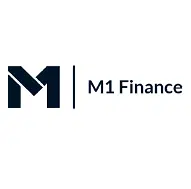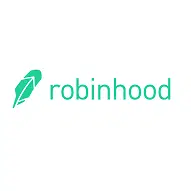Attention!
For those interested in long-term investments, I now wholeheartedly recommend Bitcoin as the primary option to consider.
However, it’s essential to educate yourself about this digital asset before diving in, as it can take time to fully grasp its intricacies and potential.
A fantastic starting point is the book “The Bitcoin Standard” (Amazon), which provides an in-depth look at the history, principles, and technology behind Bitcoin.
Once you’re ready to invest, most major exchanges offer similar fees and services, so choose one that best suits your needs. Personally, I use Crypto.com.
It’s crucial to transfer your Bitcoin to a secure wallet once you’ve made your purchase, as leaving it on an exchange can pose risks.
To truly make the most of your investment in Bitcoin, take the time to study and understand its workings. Your financial journey will benefit from a well-informed approach.
I wish you the best in your endeavors.
Sincerely
Michael J. Peterson
.
Which of these two top-rated free stock trading apps is better for you?
If you’re wondering which one to choose, you’ve come to the right place.
I’m about to break down all the features offered by Robinhood and M1 Finance in this review so that you can decide which of these two free stock trading apps is best for you!




In-depth Comparison
The world of trading stocks changed forever in 2013, with the launch of a new free trading app called Robinhood.
While they pioneered the industry of commission based trading, plenty of free investing apps followed suite, including M1 Finance.
Now you may be asking yourself, if all these apps are free, what is setting each of them apart and how do they make money?
Before we get into it, there is some important background info you need to know.
What is ‘Microinvesting’?
In a nutshell, micro investing is the act of investing small amounts of money –sometimes even just spare change– and slowly collecting returns.
Micro investing lowered the barrier of entry for traditional investing. Before these free stock trading apps existed:
- Tons of money had to be spent on trading accounts and account managers
- Most young people or people with less financial capital could not afford to get into investing
The purpose and goal of micro investing was to capture this young, mobile market and encourage them to start investing.
Micro-investing allows you to toss the price of your coffee cup into an investment account, all through your phone. In fact, it could even be as little as the spare change from your coffee. The apps do the investing for you, so you don’t need a lot of money or any prior knowledge on investing.
Robinhood and M1 Finance are vessels for microinvesting, and in my opinion, they’ve done a pretty good job at it.
Here’s the good news: if the market is performing well as a whole, your chances of making money on both apps are pretty good. The difference between the two occurs in the details. They have similar functions and purpose, but their features are quite different.
By the end of this article, you’ll find these questions answered:
- How do both apps work?
- What are their main selling points?
- Who would benefit most from each of the apps?
Whether you’re just starting out in the microinvesting world or if you’re more experienced on the platforms, this review should help you decide which is right for you!
Robin Hood Pros and Cons
RH is the most well-known free investing app out there. It’s got over 10 million users (2021) and is designed to be the most beginner friendly.
With no commissions, free trade, and an easy to use interface, this app rose to popularity with millennials and first-time investors. However, while it’s perfect for people who are just starting out, most will grow out of the features that are offered.
But don’t discount it too early.
Robinhood is fully customizable, and investors can pick from tons of investment choices. Best of all, they make investing through their app on your phone easier than ordering a pizza!
Overall, it’s the perfect first stop to learn the basics of the stock market. They make investing very simple, east and straightforward, so if you don’t really know what you’re doing, Robinhood is a good place to start.
M1 Finance Pros and Cons
M1 Finance, the free, do-it-yourself robo-advisor gives you the flexibility and independence to choose from thousands of stocks and ETFs to invest. Think about it like this: every portfolio is a pie, and the pie is divided into slices, which are certain stocks or funds. You choose what percentages you want of what, and can customize it up to a maximum of 100 different slices.
It offers passive investors the option to invest in one of the dozens of expert-built portfolios which are fully automated, meaning you make the decision, and then they do the rest for you! Better yet, they even offer pre-designed portfolios, crafted for individual investment needs.
What does this mean for you?
Well, let’s say you’re passionate about the global warming issue. You can choose a portfolio pie that is designed to include only companies that have similar values. M1 Finance allows you to invest based on causes you care about, industries you’re particularly fond of, or even to match your more practical needs like retirement.
One downside is that it isn’t designed for active traders – M1 Finance is designed for long-term investing.
Active Trading with Robin Hood
Robinhood does not offer automated financial and trading advice.
But don’t let that put you off – they’re industry pioneers for a reason. These guys are innovative and always working on something new.
Their latest project is a DRIP, otherwise known as a Dividend Reinvestment Plan, which is exciting investors immensely.
I won’t get too much into DRIPs, but you can read more about them if you’re interested here.
To start, all you need to do is get the app or sign up for an account. To trade, enter a fund or company name, hit the “search” button and the stock’s price and current information on the company should populate. All you need to do is select “trade” and you can start buying or selling the stocks of your choice.
The Robinhood app carries many different trade types that M1 Finance does not:
- Limit orders
- Market orders
- Stop-limit orders
- Stop orders
These trade options benefit short-term investors like I used to be, which was why I initially enjoyed Robinhood. It taught me a lot about trading, doing stock research and the stock market. If you like managing your own money or having a front-row seat to the action, this app might be better suited for you.
Automated Investing with M1 Finance
M1 Finance offers an all-encompassing set of features that aims to make long-term investing easier. Here are some of their key features:
Investment pies and portfolios
M1 starts by asking you questions about your investment preferences, with the idea of putting together an investment pie chart based on the types of sectors you want to put your money into.
It’s an excellent feature for passive investors who want a pre-made portfolio, and you can even browse some pre-created pie charts to get an idea of what you want to invest in, if you don’t already have it figured out.
The app then generates a pie chart specifically for you to see, detailing your investments. Your pie automatically adjusts as the market fluctuates to fit the investment goals you initially outlined.
Invest in stocks and bonds
Unlike other brokerages or robo-investors, M1 Finance gives you a bit more control of the things you can invest in. You can do some search for stocks and bonds on their platform to add them to your portfolio.
Retirement account integration
M1 Finance allows you connect your portfolio to myriad of different account options such as brokerage accounts as well as IRAs, which are not offered by Robinhood. These retirement accounts allow you to get a tax write-off on some of the capital gains you gain from your M1 Finance investments.
Fractional shares
M1 Finance allows you to invest in part of a share of a stock – you don’t have to buy a whole share. This is a fantastic feature that expands the realm of investing opportunities by allowing you to invest in higher value stocks, even with relatively low capital.
M1 Borrow
This feature allows you to borrow money from your account any time, and pay it back with low interest. To do this, you need to have a minimum of $25,000 saved in a taxable brokerage account. If used wisely, it can be good alternative to using a credit card or taking out a high interest loan if you need fast cash.
M1 Spend
You get a checking account with debit card connected to your M1 finance account so you can easily access the money that you have made investing through them. It’s free for all members, or you can pay a yearly membership fee of $125 for M1 Plus, which will get you 1% cash back on your purchases.
Key Differentiators
Robinhood: Access to Cryptocurrencies
I’m sure you’ve heard about cryptocurrencies – if you’re reading this, you were probably around for the big Bitcoin craze of 2017 and 2021 and the rise of ones like Ethereum and XRP. Cryptocurrencies have gained attention for all the potential that they can bring — enabling transactions to happen digitally, seamlessly, quickly, and securely.
However, many professionals advise newbie investors against buying cryptocurrencies, because as the relatively new concept is fleshed out and growing, there are more and more significant risks that are rising along with it. If you are interested in getting started with a simple, easy to use platform, you may want to check out this Iconomi review.
M1 Finance: Automated Rebalancing
…What does that even mean?
One of M1 Finance’s best features is their automated rebalancing feature. Think about it like this: when you add money to your account, it spreads between all the different stocks and ETFs that you’ve selected for your portfolio. Allocations change over time, so you may see some of your stocks go up while others go down.
You’re probably asking yourself, so what?
I wondered the same thing. Well, when M1 Finance invests your money, they automatically buy whatever you’re low in. Inversely, when you take cash out, M1 Finance will automatically sell whatever you’re high in, until they meet the target weights you originally set.
The whole idea of this is that they buy low and sell high on your behalf. Most active investors don’t rebalance regularly as it takes a lot of work studying the market and making trades. That’s one big reason why M1 Finance is valuable for long-term investing.
Fees
Currently, Robinhood is supporting only taxable accounts – IRA accounts aren’t currently available on Robinhood. Robinhood also doesn’t support trusts or joint accounts, whereas M1 Finance does.
Fees aren’t really an issue here, since both Robinhood and M1 Finance are almost equal in the fees department. The whole point is that you can use both services on a basic level with nearly nothing!
They both don’t charge trading or commission fees, but M1 Finance has a minimum investment requirement of $100 to be able to open an account.
Robinhood has the edge for investors that are looking to start small, since the platform does not require any level on investment upon joining. You only need to put in enough money to buy the stock or other investment that you are interested in, and it’s go time!
Investment Options
You can trade on the following for free on Robinhood:
- Stocks
- ETFs
- Options
- Selected cryptocurrencies
While in my opinion, Robinhood was a great option to first get me into trading, I found that as I did it more and more, I was lacking a lot of research tools that other brokers have. This lack of information can have material impact when you start to invest more money. That being said, this problem can be easily solved by just doing your research elsewhere.
Robinhood can also reinvest your dividends directly back into the stock instead of putting the cash back into your general cash account.
With the M1 basic plan, you get the following features
- Trade ETFs and stocks during the daily trading window (opens at 10am EST)
- Access to over 6,000 ETFs and stocks or over 100 expert portfolios
- Schedule monthly, weekly and daily trades
- Auto portfolio rebalancing
- Individual, joint, trust or IRA account creation
Best of all, you can loan up to 35% of your investment portfolio balance, but keep in mind that you need to pay monthly interest any of it which is outstanding.
Premium Services

- Access to margin (the ability to buy more stock than you would normally, by borrowing money from a broker to purchase stock)
- Larger instant bank deposits
- Level II Market Data from NASDAQ
- Professional research reports from Morningstar
The Gold membership is free for the first 30 days, then the cost is $5/month. You can sign up any time through your account settings.

- Lower costs on borrowing
- A second trading window which opens at 3pm EST
- 1% cash back on debit card purchases
- 25% discount on M1 Borrow cash loans
- 5% APY interest on deposits made to M1 Spend checking account
- Four ATM withdrawal charges waved monthly
- In case your account has a value over $10,000, you can take loan up to 35% of your account value, and return it whenever you want (however, you are paying interest now)
In my opinion, both are good for different kinds of people. However, as someone who wouldn’t use 90% of the premium features offered by M1 Finance, I wouldn’t be able to justify the annual fee. This, however, is subjective.
Keep in mind, the borrowing process is quick and there is no mandatory credit check.
If you plan on refinancing debt on your high interest credit card, the low interest rate can be ideal, but tread softly: this can be a slippery slope. That’s where they get you.
FAQ
Can I day trade with Robinhood or M1 Finance?
You can trade throughout the day with Robinhood, but not M1 Finance, however, there are still some limitations. For Robinhood accounts that are valued at less than $25,000, you cannot do more than 3 trades a day throughout the 5-day trading period. Accounts valued at over $25,000 can day trade with no restrictions.
Which one should I go with if I’m very environmentally-conscious?
Both tools offer sustainable investment choices, though M1 Finance makes it a breeze to pick these choices by dedicating a complete pre-built portfolio to provide socially conscious investing.
Are these trading platforms safe?
Both offer two-factor authentication. Your account is protected by many high-level algorithms that are sophisticatedly encrypted. Your money is insured by SIPC against loss of money and securities from a broker’s failure, meaning if either of the apps were to default on paying you. It doesn’t provide protection against declines in your investments.
Robinhood or M1 Finance: The Verdict
In my opinion, both are great options if you’re just getting into micro investing. They’re both reasonably established and have great features depending on your financial bandwidth and goals.
In short, Robinhood is a good pick for a complete beginner. They offer basic research tools, and allow you to trade various assets types, including option contracts and cryptocurrencies, which are not offered by M1 Finance. Unfortunately, you will be paying taxes on all your capital gains, since you can’t open a retirement account with Robinhood. Therefore, it’s better suited for short-term investors who want to get in, and get out.
To summarize, choose Robinhood when:
- You want real-time trades
- You are an active investor who is looking to make short term gains
- You plan on trading options or cryptocurrencies
Who should be investing in M1 Finance?
Long-term investors, particularly dividend investors. M1 Finance has a $100 account minimum and a $500 retirement account minimum, so they are more suited for people with a bit more money (compared to Robinhood’s $0 account minimum). M1 Finance is also the only of the two to offer retirement accounts.
To summarize, choose M1 Finance when:
- You’re okay with a single daily trading window (if you’re not willing to upgrade to M1 Plus)
- Won’t be trading options or cryptocurrencies
- Plan on investing long-term
- When you are an involved investor who wants to create his or her own portfolio
What does this mean for you?
If you’re not 100% dedicated, and you only want to choose one platform, let it be M1 Finance. It wins with regards to their robo-advisors, customized investment portfolios, automated rebalancing and lending. If you want to learn the basics on a very small scale, choose Robinhood.
If you want to share your experience with either of these apps please don’t hesitate and comment below!
Michael is a senior writer at The Robo Investor. He earned his master’s at the Craig Newmark School of Journalism at CUNY, and is currently taking CFP courses at the University of Scranton. He has been an avid finance enthusiast ever since he started investing at the age of 23. Meet the Team

